Proper Golf Grip Technique: Your Ultimate Guide
Feeling Lost When It Comes to Proper Golf Grip? Finally Learn the Right Way Hold the Club and Swing for Your Grip.
Have your golf buddies ever told you the problem with your swing is that you don’t have proper golf grip?
This “handy” tip is pretty common in a regular round of golf. You hit a few slices or shanks and friend tells you to try strengthening your grip. Or that you need a weaker grip. Or that you’re holding the club the wrong way.
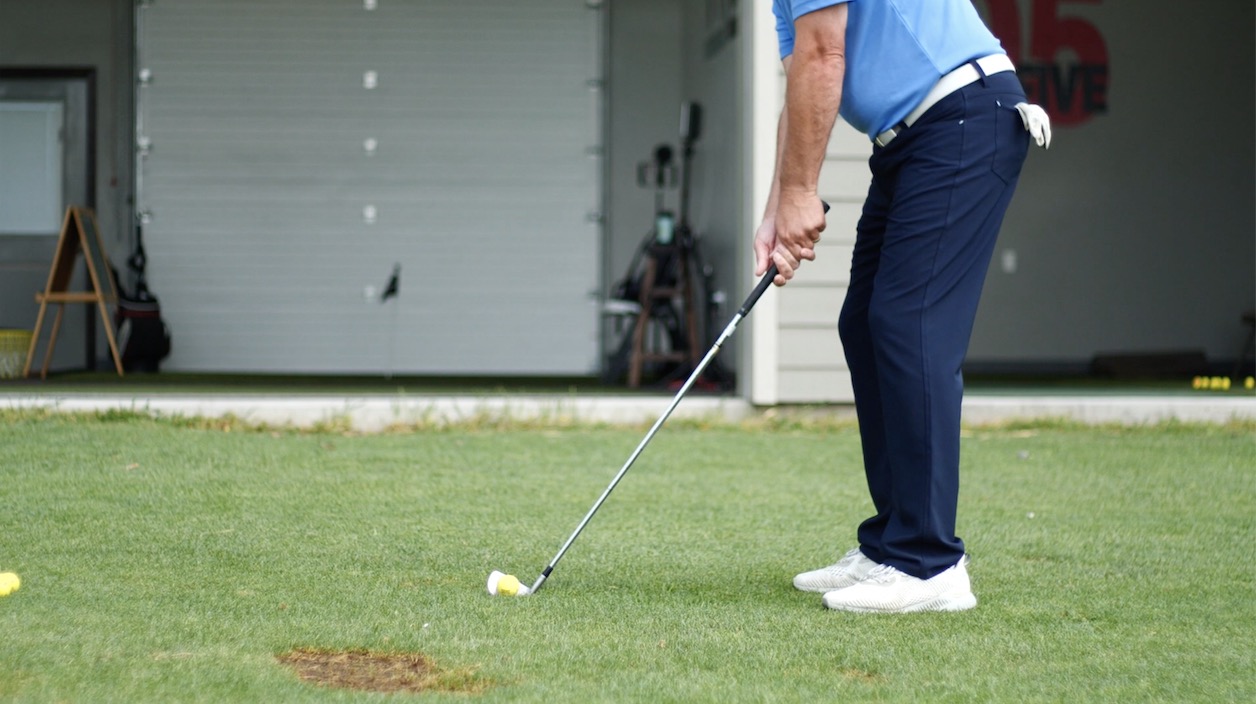
But then you watch players on the PGA Tour and see some inconsistencies. Jon Rahm has a weak grip. DJ’s grip is strong. Neither one seems to be struggling because of how they hold the club.
So how are you supposed to know which grip is the proper golf grip?
The truth is, golf grip is more complicated than your buddies think it is. Mastering your grip involves:
- Identifying which grip is right for you
- Learning the two steadfast rules that apply to all golf grips
- Understanding the relationship between your grip and the orientation of the club face
- Knowing how to adjust your swing based on your golf grip
It sounds like a lot, we know. But we’re going to lay it all out for you in simple terms you can easily apply today.
How to Analyze Your Golf Grip
Establishing a proper golf grip is one of the most essential tips for beginners. Unfortunately, a lot of amateur golfers get bad advice in this area from the get-go.
While it’s true that both strong grips and weak grips affect your swing, that doesn’t necessarily mean that a neutral grip is always best. While we typically recommend a neutral gift for most of our students, we don’t believe neutral is the only way to go.
If a strong or weak grip feels more natural to you, we can work with that.
And the first step is making sure you actually know which type of golf grip you have.
How Do You Know What Kind of Grip You Have?
When you hear the terms “strong grip” or “weak grip,” you might automatically think in terms of grip pressure.
Put away those associations for a minute, because we’re going to look at your grip in terms of lead hand position.
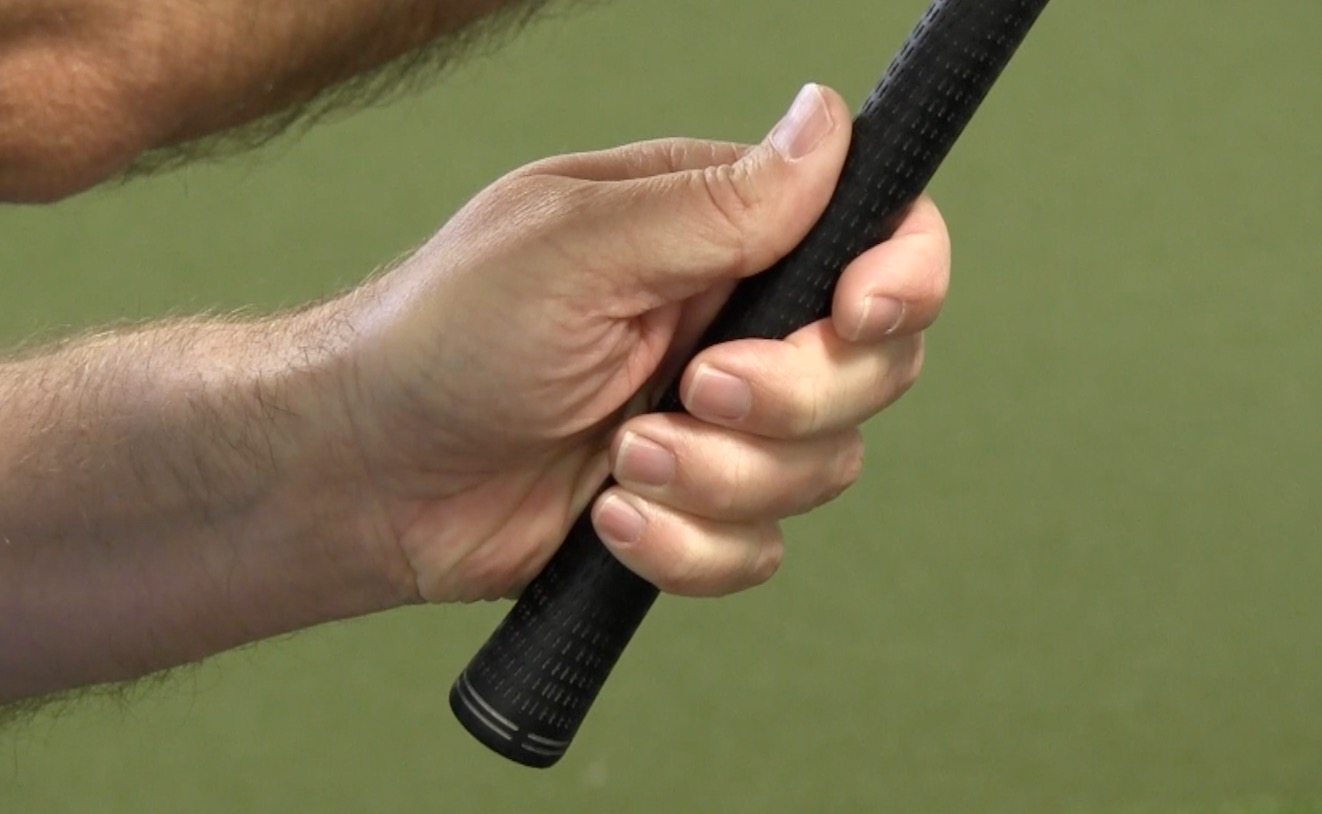
You have one of the following golf grips.
Neutral Golf Grip
As we mentioned above, this is the grip we recommend for most golfers. We like a neutral grip simply because it’s the easiest way to get your club face in the right position at the top of your swing without any extra maneuvers. If you have a strong or weak grip, you have to do some compensating in the backswing.
To determine whether you have a neutral grip, take your regular golf stance, holding your club as you normally do. Look down at your lead hand. If you can see 2 or 2 ½ knuckles on your lead hand from this vantage point, you have a neutral grip.
Weak Golf Grip
If your lead wrist rotates counter-clockwise in your grip (assuming you are right-handed), you have a weak grip. Look down at your hands as you hold your golf club. If you can’t see any of the knuckles on your lead hand, your grip is weak.
While we don’t actively recommend a weak grip, it’s not impossible to play well with one. Both Jon Rahm and Jordan Spieth have neutral-to-weak golf grips.
Strong Golf Grip
If you grip your golf club like you’re revving a Harley, you have a strong golf grip.
Check your lead hand when you take your setup. Do you see almost all or all of your lead knuckles? Then your grip is strong.
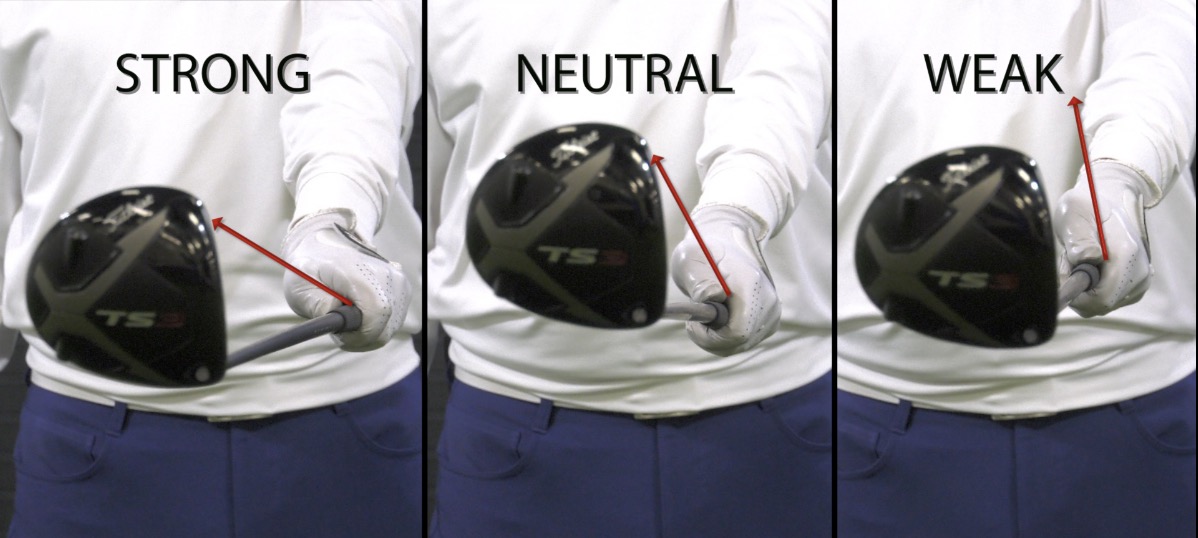
How Do You Know if You Have a Proper Golf Grip?
As we said before, the strength of your grip should inform the mechanics of your golf swing. We’ll dig into those details in a bit. We’ll also examine the actual form of your golf grip.
Soon, you’ll realize why it’s difficult to define “proper golf grip.” There simply is not a universal standard.
However, there are two rules every golfer must observe, no matter how they grip the club.
- Never let your hands separate.
- Grip the handle in your fingers, not in your palms.
Repeat these rules. Remember them. Observe them constantly. If your hands are not touching and the handle is in your palms, you do not have a proper golf grip.
Now, let’s dig into the specific techniques that help you follow these rules.
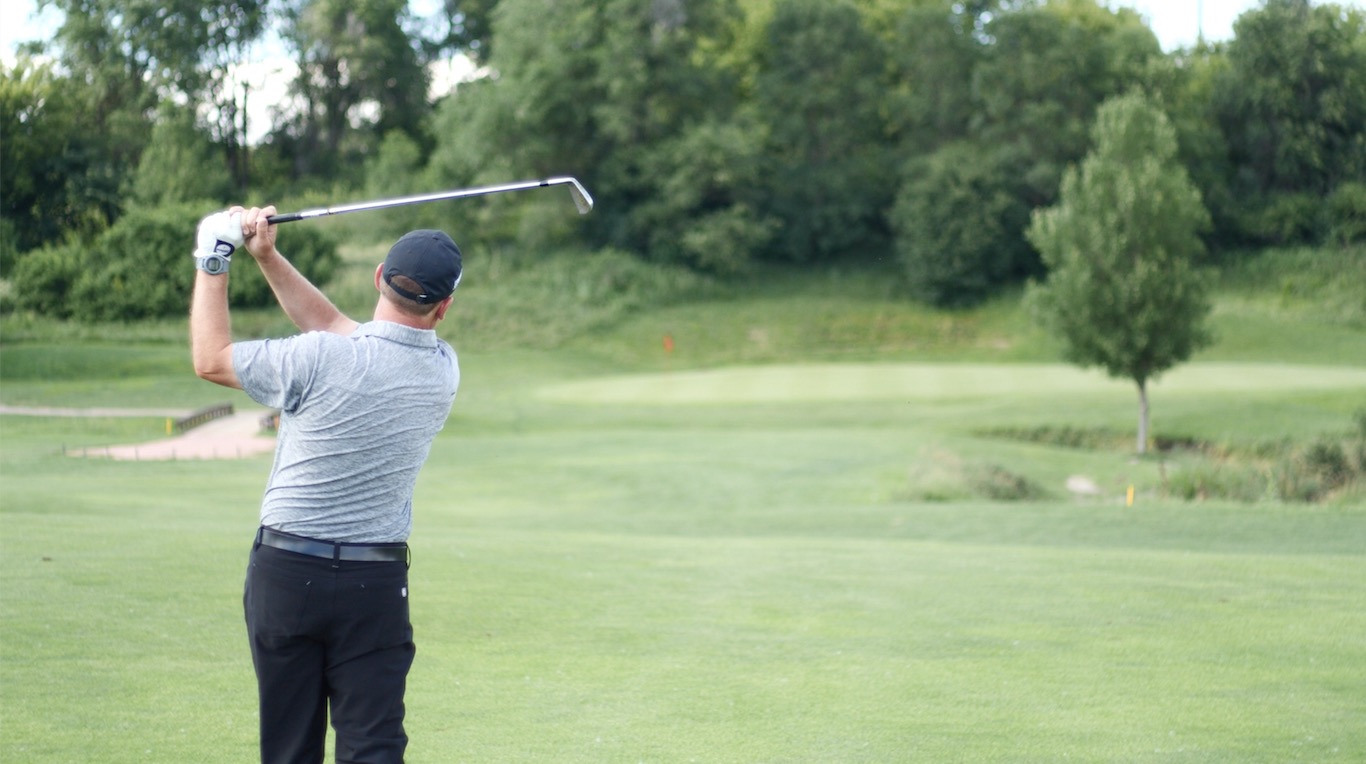
Elements of a Proper Golf Grip
Before we take a more detailed look at the way you hold the club, let’s make sure we’re on the same page in terms of terminology.
Your top hand is your lead hand, sometimes also referred to as your dominant hand. These terms can be confusing if you’re not used to them. Your top/lead/dominant hand in golf is the opposite of what you consider your dominant hand to be in day-to-day life.
If you’re right-handed, your top hand is your left hand. If you’re left-handed, it’s your right hand.
The bottom hand is your trail hand. For right-handed golfers, this your right hand. For lefties, the bottom hand is probably your left hand.
Now that we’ve established our terms, let’s take a look at the three possible ways these hands work together to create a proper golf grip.
Strength Versus Form
Just as the strength of your grip affects your ability to hit straight shots, the form of your grip impacts your control and power.
There are three different techniques you can use in your golf grip:
- The Ten Finger Grip
- The Overlap Grip
- The Interlocking Grip
Any one of these can be neutral, weak, or strong. Each type has its own advantages, depending on the strength and build of the golfer.
Ten Finger Grip
The ten finger grip is most popular among those who have limited strength. Many new golfers, children, and women favor the ten finger grip.
It’s easy to remember what the ten finger grip looks like, because it’s in the name. If all ten fingers are against the handle of your golf club, you have a ten finger grip.
This is also known as the baseball grip. If you were to lift the club off the ground, you would see that you’re holding it the same way you’d hold a baseball bat.
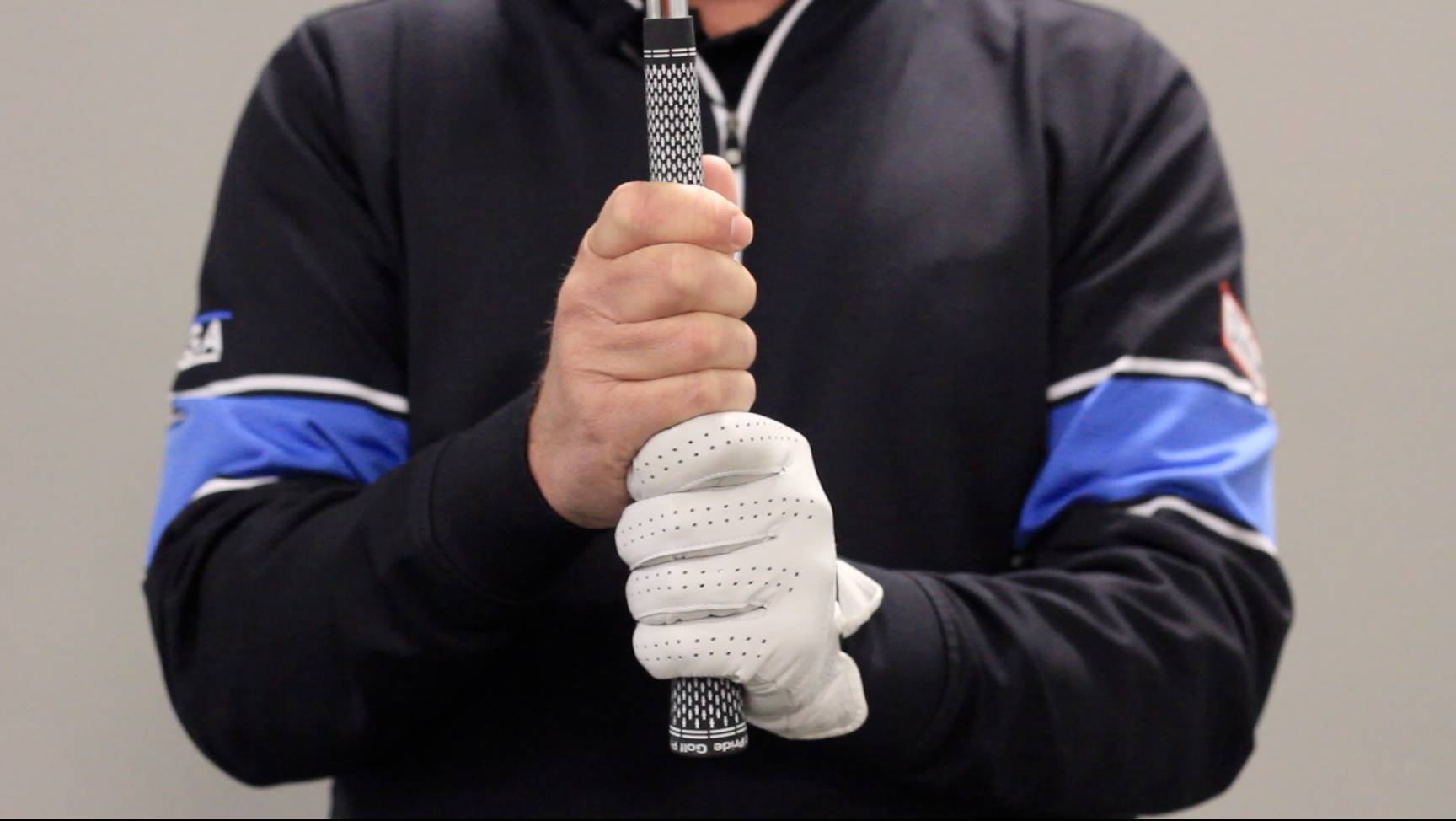
Here’s how to achieve a proper ten finger grip.
- Grip the top of the handle with your lead hand. Remember to grip with your fingers, not with your palm. Your thumb should run along the length of the club.
- Place your trail hand around the handle below your lead hand. Again, grip with all ten fingers.
- Slide your bottom hand up to meet the top hand.
- Make sure your bottom hand covers the thumb of your top hand.
This last step helps you check yourself for hand separation. As long as your bottom hand covers that top thumb, you know your hands are together. If those hands separate, you’re going to have problems with your golf swing.
Overlap Grip
The overlap golf grip is especially popular among men and strong golfers. You may see some Tour professionals using other grips, but generally, those who want to play at the highest level opt for the overlap grip.
Once again, this grip is exactly what it sounds like. The bottom pinky finger overlaps the top index finger. This helps you keep your hands together.
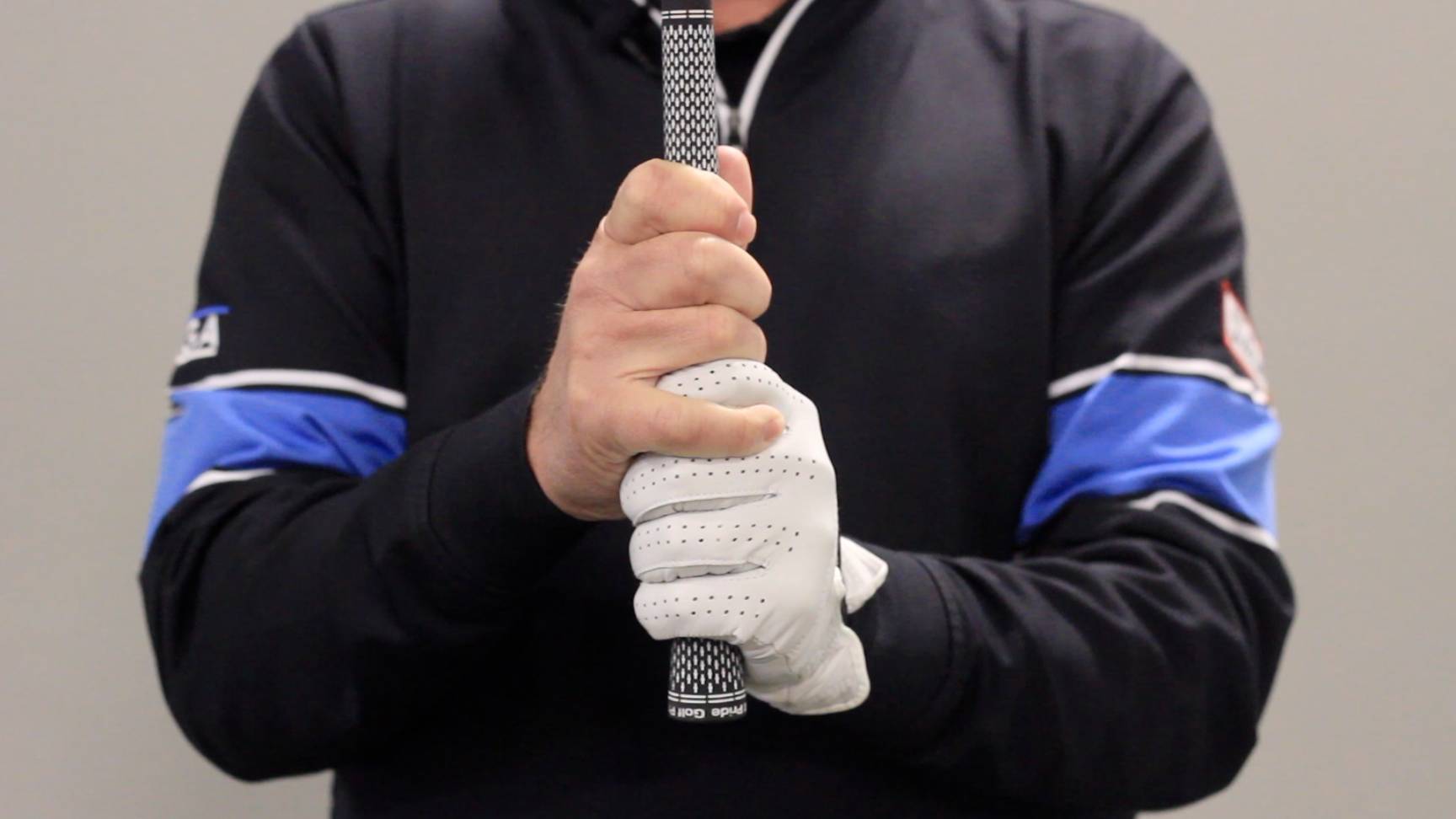
To create an overlap grip:
- Grip the top of the handle with the fingers of your lead hand.
- Place your trail hand around the handle just below your lead hand.
- Cover your top thumb with your bottom hand.
- Make sure you’re gripping the club with the fingers of both your top and bottom hands, not the palms.
- Overlap the pinky of your bottom hand over the index finger of your top hand. Let it rest between the index finger and middle finger.
If you already have a lot of strength in your swing, we recommend this golf grip. The overlapping little finger keeps you mindful of where your hands are in relation to one another.
Interlocking Grip
The interlocking grip is not super common in professional golf, but it is present. In fact, some of the best players in the world choose this style of golf grip.
This grip basically takes the overlap grip one step further by interlocking the pinky and index fingers. The interlocking grip can be a game-changers for those who have smaller hands or fingers. By locking fingers, those golfers have an easier time keeping their hands together.
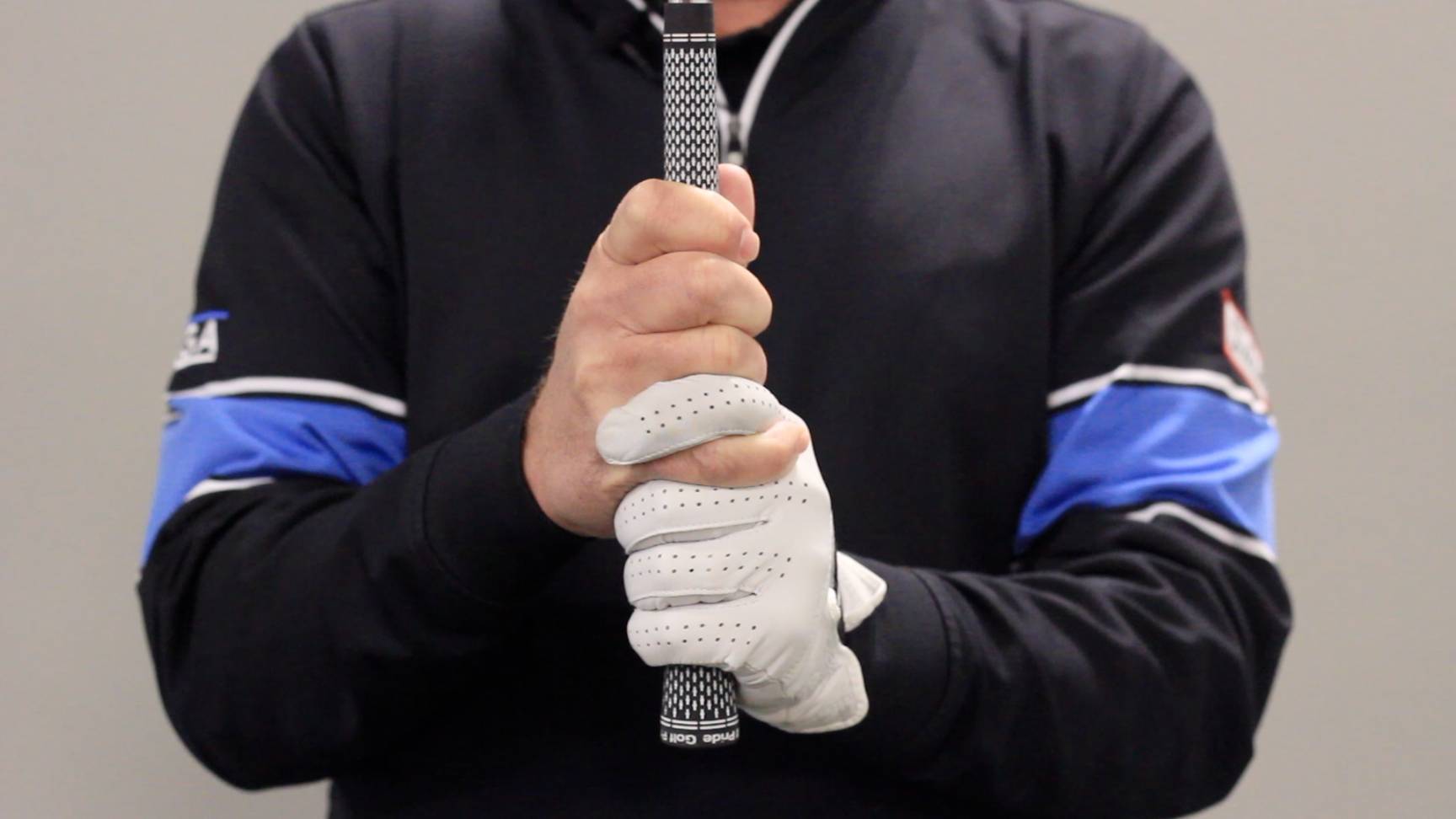
Here’s how it works:
- Grip the top of the handle with the fingers of your lead hand.
- Place your trail hand around the handle just below your lead hand.
- Cover your top thumb with your bottom hand.
- Make sure you’re gripping the club with the fingers of both your top and bottom hands, not with the palms.
- Overlap the pinky of your bottom hand over the index finger of your top hand. Let it rest between the index finger and middle finger.
- Pull your top index finger out from underneath your bottom fingers. Look it into place between the little and ring fingers of your bottom hand.
How to Hold the Golf Club in Your Hands
There is one notable downside to the interlocking grip. When you lock your fingers together, it’s very easy to let the club slide into the palm of your hands. So even as you follow one rule of the proper golf grip—keep your hands together—you neglect the other.
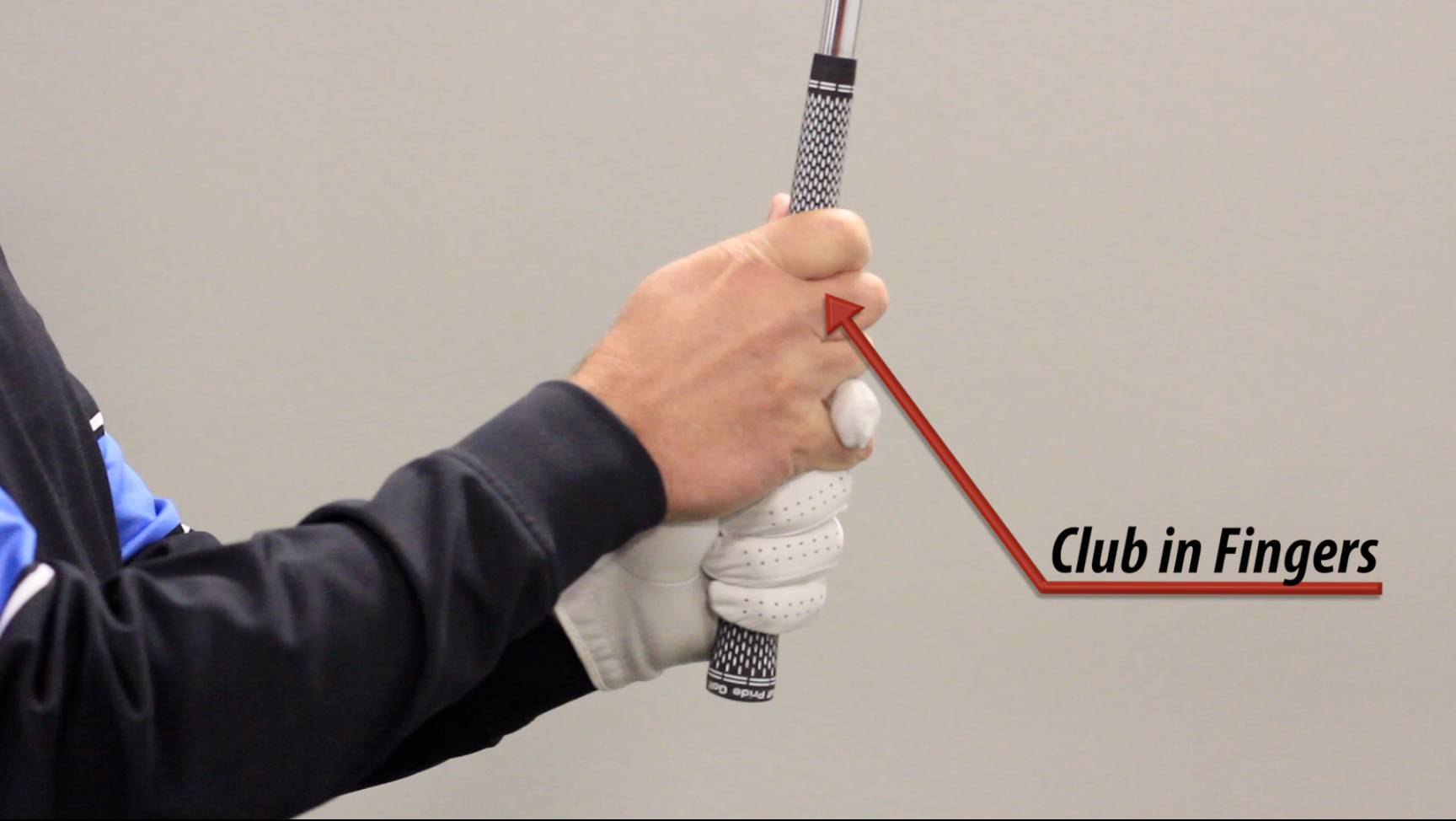
This is why we encourage the overlap grip whenever possible. But if you think you could benefit from interlocking your fingers, go for it. Just be careful to grip the handle with fingers only.
Okay, now that you know how to identify your own golf grip and check yourself for proper form, let’s discuss why it matters.
How a Proper Golf Grip Can Affect Your Entire Game
Let’s cut to the heart of the matter. After all, we’re not sitting around discussing proper golf grip for the sake of your health.
Your golf grip impacts the orientation of the club face. And as you may be aware, face control is vital for a successful golf swing.
Now, a neutral grip is the best grip for easy, no-fuss face control. But if that grip is not the most natural grip for you, don’t worry. You can still hit solid shots with a strong or weak grip. You just have to understand how your golf grip affects the top of your backswing.
How Your Grip Affects Your Golf Swing
Imagine you do nothing to compensate for your grip in the backswing. All things being equal, the direction of your club face at the top of the backswing will depend entirely on your grip strength.
Let’s take this grip by grip.
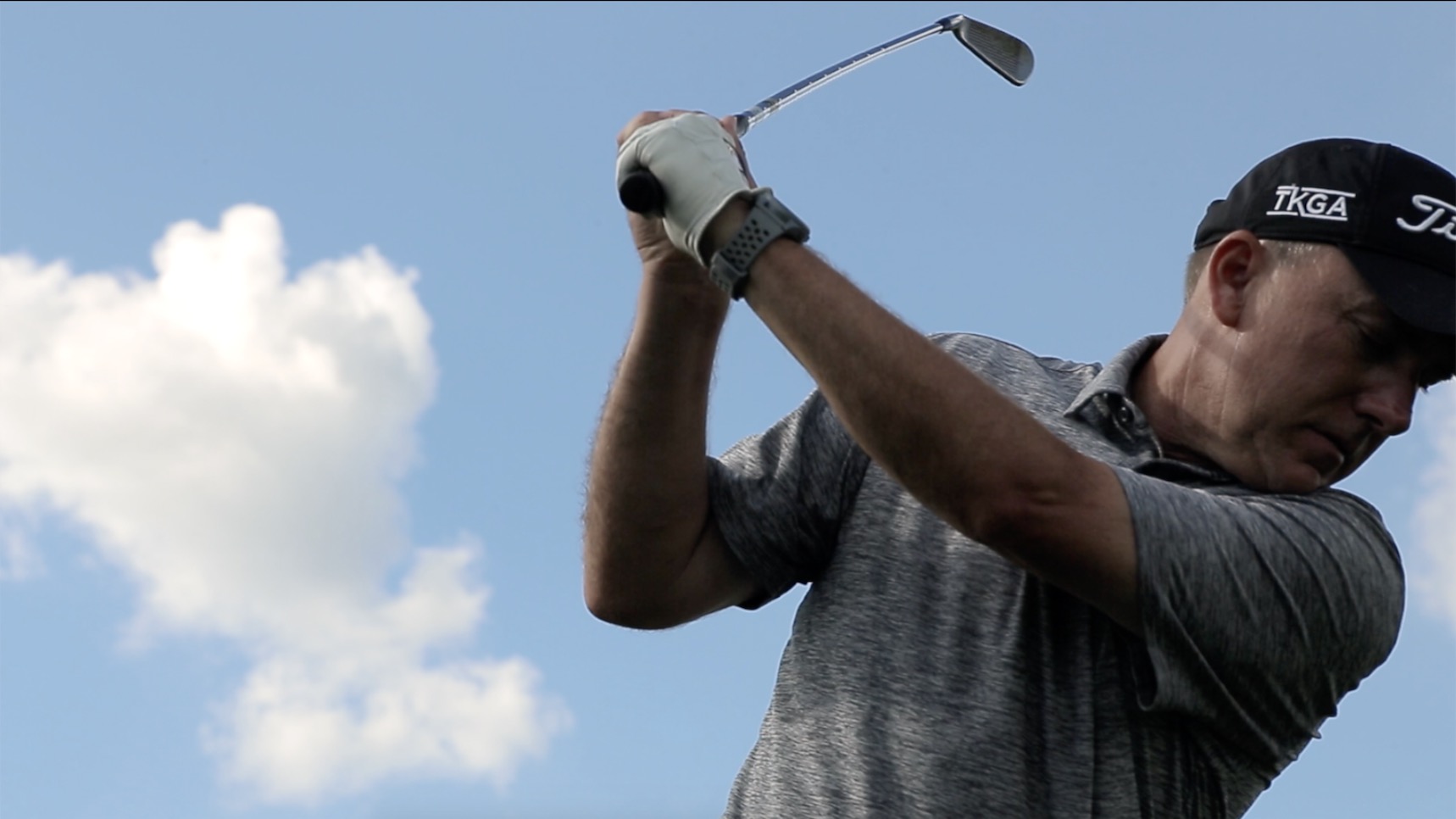
Neutral Grip
For those who have a neutral golf grip, the top of your backswing probably looks like this:
Your face position is in line with your (flat) lead wrist and your lead forearm. You’re all set up to deliver a square clubface at impact.
Weak Grip
If you have a weak grip, the clubface will point downward at the top of your swing. This creates an open clubface. Watch Jon Rahm, and you’ll notice he often has an open face at the top of his swing. However, he knows how to correct his clubface in the downswing. That’s a tall order for casual golfers.
Strong Grip
If you have a strong grip, your clubface will point up towards the sky at the top of your backswing. This is what we call a shut or closed face. You might notice the same thing in Dustin Johnson’s swing.
Adjusting Your Swing for Your Golf Grip
So, how do you control the club face if you don’t have a neutral grip?
It’s all in the wrist.
As you take your backswing, your lead wrist can be in one of three positions.
- Flat: You maintain a neutral wrist without any cupping or bowing.
- Extended / Cupped: You tilt your wrist upward, creating that little cup near the base of your thumb. This is similar to the motion you’d use to cast while fishing.
- Bowed / Flexed: You tilt your wrist inward, so the palm of your hand curls in toward your body.
All three of these wrist positions can help or hurt your golf swing, depending on which grip you use.
Neutral Grip
If you have a neutral grip, you want to keep your lead wrist flat on your backswing. This is how you maintain that square club face at the top of your swing and at impact.
If you cup your wrist, you open the club face. Flexion, on the other hand, gives you a closed club face. Either way, you’ve created a problem you have to fix in the downswing.
Weak Grip
If your grip is weak, a flat lead wrist won’t help you. You need to get a lot of bow in the wrist to get the club face square.
You definitely do not want to cup you wrist with a weak grip. Cupping, or extension, opens the face dramatically.
Strong Grip
If you have a strong golf grip, cupping is good. That’s how you correct that shut club face caused by a flat or bowed wrist.
Super Simple Guide
Let’s put that into an easy-to-follow checklist.
- If you have a neutral grip, maintain a flat lead wrist on the backswing.
- For a weak grip, bow your lead wrist on the backswing.
- If you have a strong grip, cup your lead wrist on the backswing.
Bonus Tip: Fix the Slice by Adjusting Your Grip
Now that we have the complicated stuff out of the way, here is the easiest tip you’ll ever get on proper golf grip.
If you’re struggling with the slice, try switching to a ten finger grip.
The ten finger grip allows you to rotate your forearms more easily, which in turn helps you close the club face just slightly. For many golfers, this is enough to fix the slice . . . at least in the short term.
Now, if you’re serious about playing better golf, we recommend taking a closer look at what causes the slice. We have some great articles on fixing the slice and we’ve even created a free ebook that examines the Science of the Slice in simple terms.
But if you’re not a particularly serious golfer and you’d just like to get rid of this frustrating shot, try the ten finger grip.
Differences Between Left-Handed and Right-Handed Golfers
If you’re a left-handed golfer, all the advice above does apply to you. All these grip types are the same whether your left hand is on the top or on the bottom.
The world of golf tips can be tricky to navigate if you’re a left-handed golfer. A lot of advice is written with the assumption that the reader is right-handed. Even as we clarify words such as a “slice” and “hook,” we do so using directional terms that only apply to right-handed golfers.
Regardless, the game and the technique are the same whether your dominant side is your right or your left.
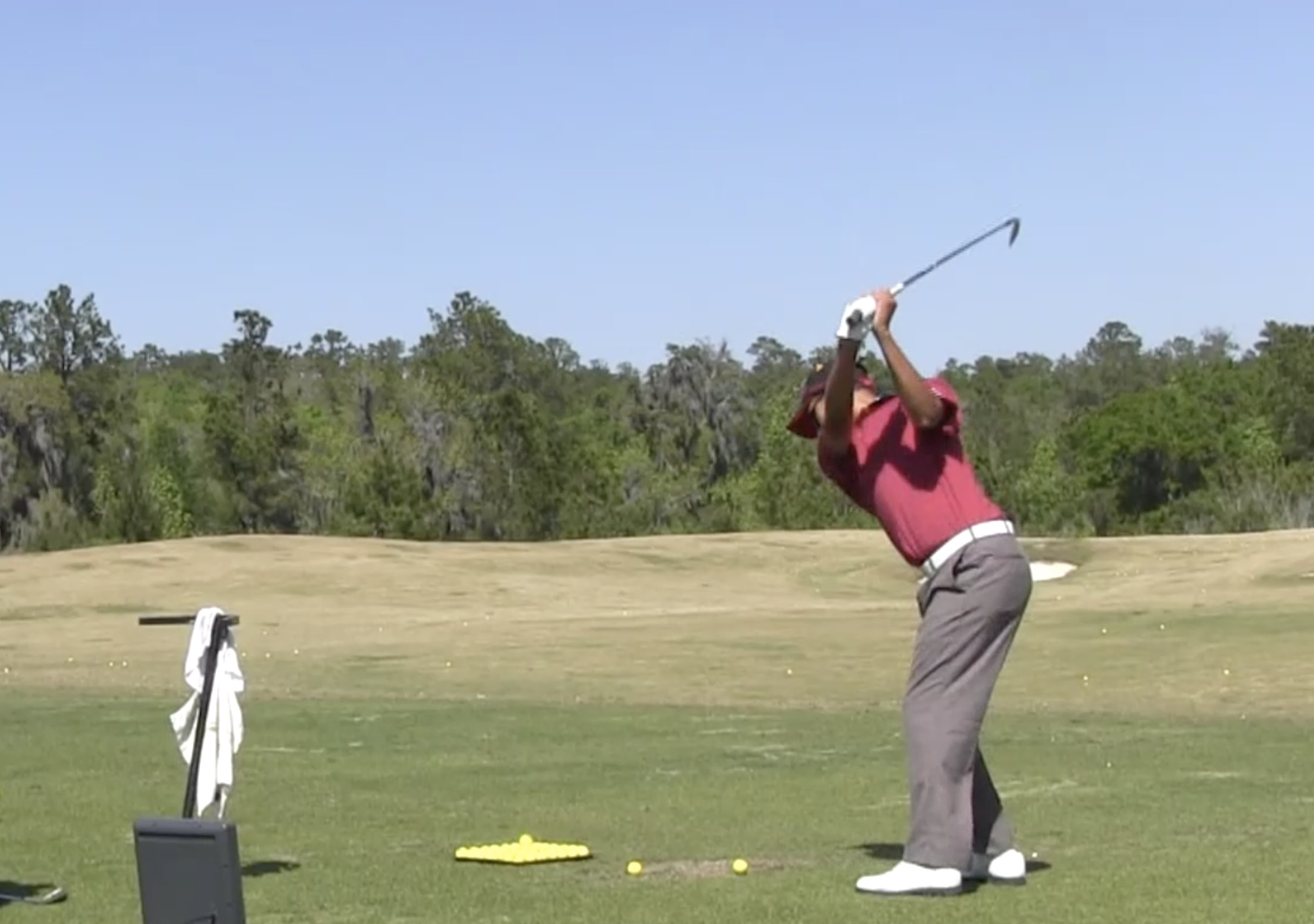
Happen to be a lefty? Here is some clarification on those terms that are so often written with right-handers in mind.
Terminology for Left-Handed Golfers
The following words always refer to the side of your body that is closest to the target:
- Lead
- Dominant
- Top (referring to the top hand in your golf grip)
For left-handed golfers, the side of your body closest to the target is the right side.
These words always refer to the side of your body that is farthest from the target:
- Trail
- Bottom (referring to the bottom hand in your golf grip)
Anytime you encounter an article or video that uses the words “left” or “right” and the content is not specifically geared towards lefties . . . you can assume the instructor is talking about right-handed golfers. In that case, reverse the terminology for yourself.
For you, right means left and left means right.
We know it’s a pain. But rest assured that the advice itself is just as good. Whether you’re learning proper golf grip or how to stop shanking the ball, the standards are the same for everyone.
Are Left-Handed Golfers at a Disadvantage?
Many left-handed golfers wonder if they are at a disadvantage in the sport. The way we talk about golf tends to favor someone who is a right-handed golfer. Could there be other losses for a left hander in the structures of our favorite game?
Perhaps. But these disadvantages are minor, and they’re becoming less of an issue all the time.
For example, golf equipment has come a long way. Your left-handed father may have had a hard time finding a decent set of clubs, but you won’t.
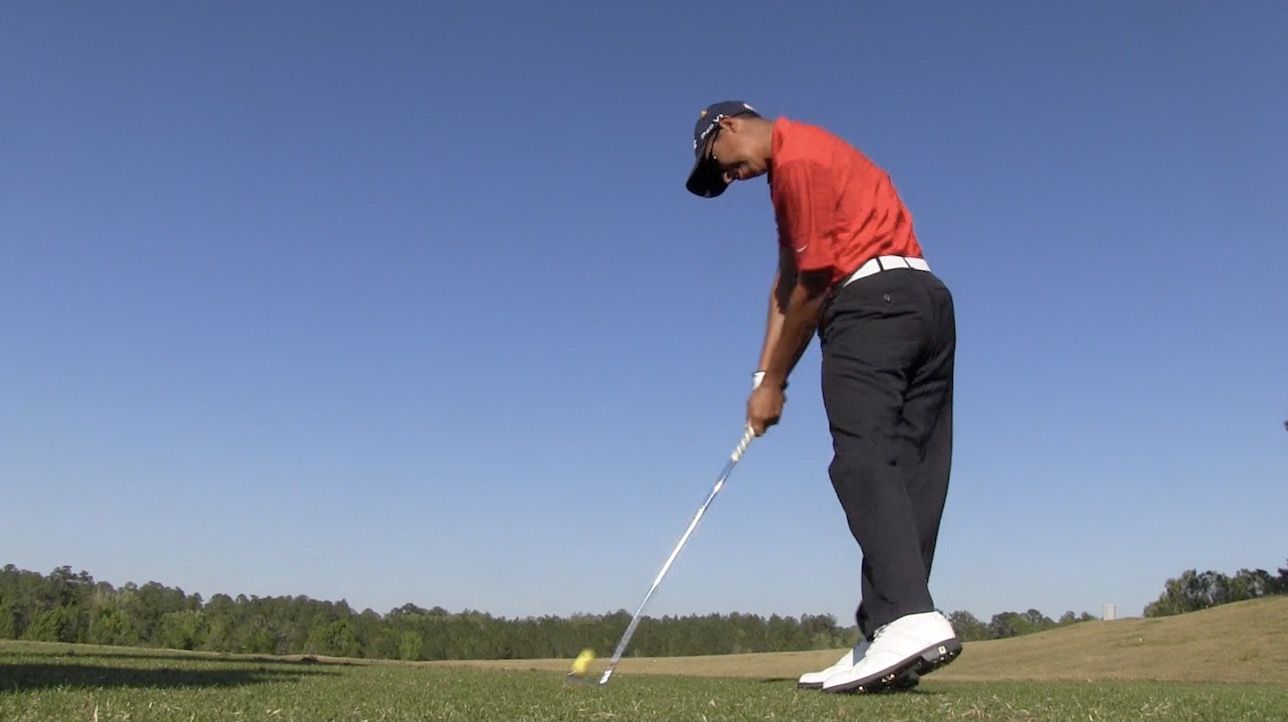
If you take golf lessons, odds are good that your instructor is far more accustomed to helping right-handed golfers. This means they have less practice helping players perfect a left-handed golf swing.
And as mentioned above, articles and videos can be difficult to follow as a lefty. You are essentially collecting advice only to do the literal opposite of what the writer or instructor tells you. Confusing, to say the least.
But here’s the good news. Because golf is played laterally, you can use the same tips no matter which hand is dominant. It’s the same game whether you’re on the right side of the ball or the left side.
There is no reason left-handedness should ever hold you back. Just look at everyone’s favorite Lefty: Phil Mickelson, famous for his flop shot.
(And by the way, that guy’s not even left-handed outside of golf.)
No matter which hand is your top hand, these proper golf grip tips are for you.
Take the time to figure out which grip is right for you and how to adjust your swing to complement your grip.
What’s the Next Step?
Now that you have a better understanding of the proper on the golf club, you should probably get a better understanding of how to swing the golf club.
Learn more about the proper golf stance and setup, understand concepts like , and get a few key checkpoints to get your game ready for the links!
Once you do that, you can dive deeper into the relationship between the club face and swing path, and understand how these two work together to shape your golf shots.
Then..
…join us back here in the comments! Tell us what you learned, what questions you have, or even if you disagree with anything you see here. We’re always here and always happy to talk golf.
For more in-depth golf tips, visit us at GreatGolfTipsNow.com. This golf instruction is completely free and packed with detailed advice to help you play better golf!


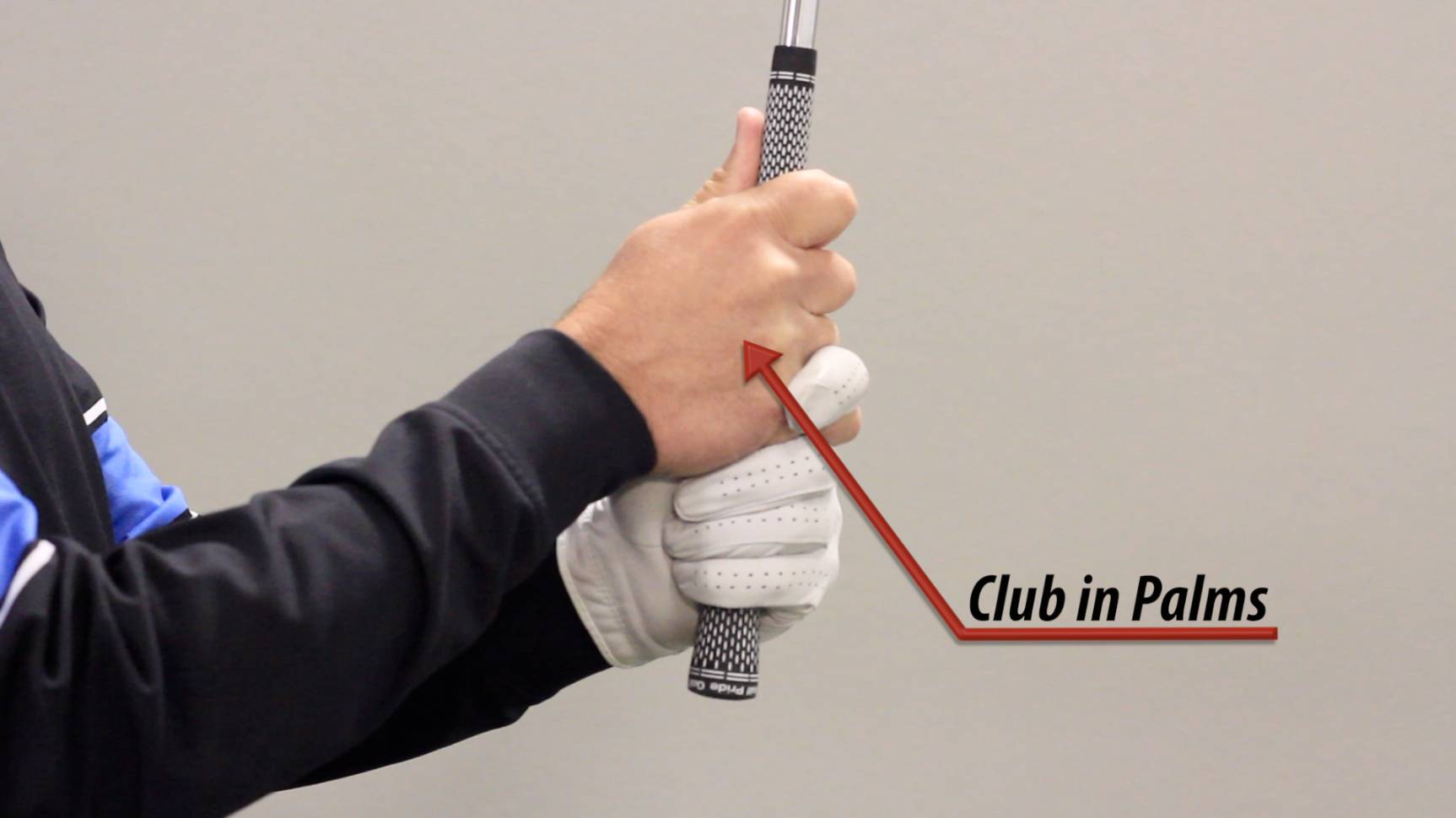
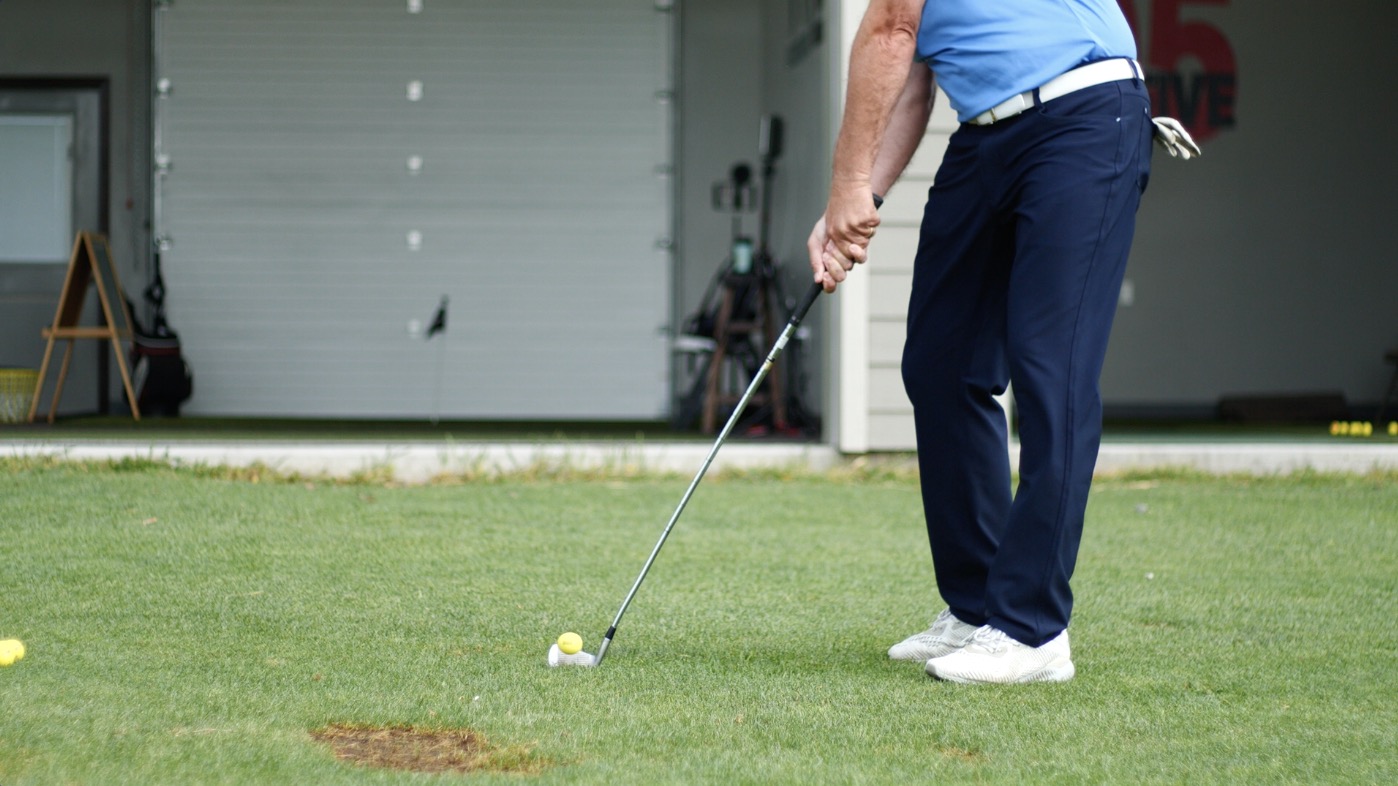
For some reason I Ido not hit my 7,6 and 5 irons well but I hit my woods well, after watching it must be my back swing any recommendations
Terry,
Thanks for asking. Here is a great place to start https://youtu.be/l3LNCvkJmfI
Todd, Your discussion of grip is very helpful, especially in clarifying how grip may affect the clubface at the top of the swing. However, you haven’t addressed the matter of grip pressure. I think I have the tendency to use too much pressure and, as a consequence, tense the muscles in my forearm. What your grip description indicates to me is that the muscle tenseness restricts the ability to square the clubface and might even cause my tendency to swing outside in. I remember Sam Snead used to talk about grip pressure as being what you might use to hold a bird without crushing it. Thanks for your informative videos. They are helping my game. Len Mark
Len,
Good question. The key is to have consistent grip pressure throughout the motion. Most golfers think they should grip the club super light, this is not always true. You want to be consistent…that is most important. If you feel like your grip pressure is changing or too tight, take a look at this video https://youtu.be/VUVaxRMO8rw
Dear Todd,
I am 77 years old and play to a 14 handicap. I played to a 9 in my 60’s but can’t reach most par 4’s in 2 any longer . I used to drive the ball 265 yards but now I am lucky to hit the driver 185-190 yards! I still enjoy golf but it is depressing to playing the 10 par four holes on my course as par 5’s!
My question is, what should be my mindset about this and what should I work on to keep the games fun and challenging! Thanks, Todd,. I love your material and instruction . Look forward to hearing from you.
James Greth
Arcadia, Ca
jgreth411@gmail.com
Todd it would be great to get your insight on the right grip size for ones golf clubs. I have had conflicting advice on whether I should be using regular or mid size grips. I have used both and find the feel and control of the club face to be dramatically different.
James,
Good question. It can depend on personal preference and hand size. In general, a thinner grip will make it easier to draw the golf ball. IMO it is better to have grips that are too thin than too thick. Hope that helps…
James,
Thanks for the kind words! Great to see you playing the game well into your 70’s, you are inspiring! I suggest you play from tees where you can reach par 4’s in two and give yourself an opportunity for a few birdie putts. The is designed to hit par 4’s in two…that is when it is fun. Check out our YouTube channel for more tips on how to increase clubhead speed for older golfers. https://youtu.be/lJCrJUQ00Jk
Transformation to my swing. Have gained 10% distance and now hit driver 240 for the first time on 25 years of golf ( I’m 65)
However, it appears I have the most success if I feel like I take the club straight up rather than back a little way before lifting. Is this ok?
David,
You bet! This is fantastic. The key for all of us is to find what works best for US….that is most important. Thanks for posting.
where should the elbows be facing at address?
Where should the right hand be in the grip, thumb to right, center or left? I believe if it is right of center it causes the golfer to hook the ball. Your thoughts.
Good question, it can vary based on hand size and style of grip. In general we like to see it slightly to left of center as you are looking down at your hands from the address position.
We like to see them pointing at the hips, however it can vary based on grip style.
All this staying at home really makes me want to try a new past time like golf. I didn’t realize how grip can be important to adjust your strength and properly move the ball to where and how you like it. I think I need someone like to teach me since they know more than I do.
Claire,
Golf is a great game. Here is a good place to start your learning https://youtu.be/ZuShQO2JSxM
Todd,
Your videos are very educational and helpful. I find when I use a strong grip, I actually slice more. I guess I can’t change the cupped wrist you have at address with it, thus it comes into impact with an open clubface. I do have some arthritis in my fingers and hands that has me trying midsize grips (cadet large) glove. Have not experienced hitting to the right as a result, so will see how it goes. I do have a question. Why do you advocate a “short thumb?” The thumb being closer to hand. Doesn’t the “long thumb” make for a better hinge? Thanks in advance.
Mike
Mike,
Good questions. The long thumb makes is more challenging to hinge the club. Short thumb is best when possible. Take a look at this video on why the strong grip does not work for fixing the slice https://youtu.be/hnFrG_GFFBw